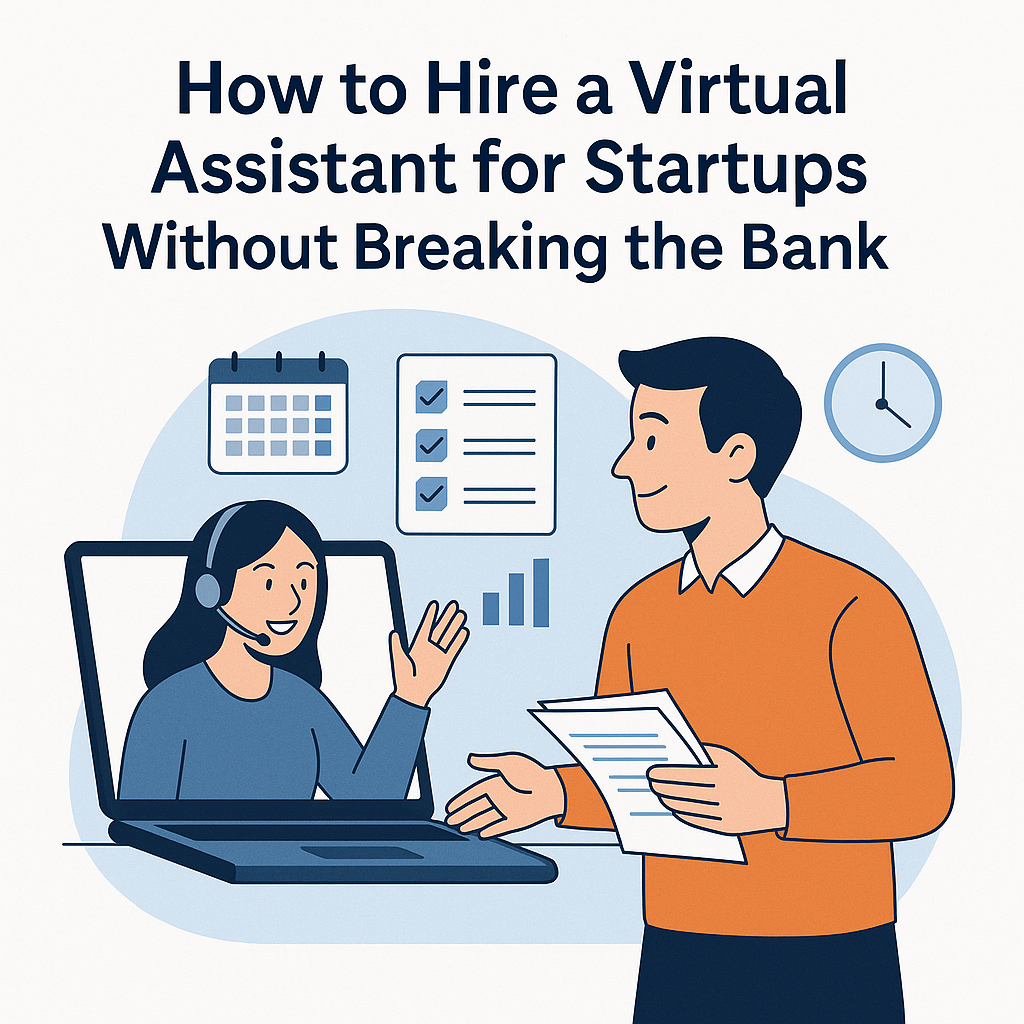- Have Questions? Talk to Us
- info@procizo.com

Why Every Growing Business Needs a Virtual Assistant and Virtual Administrative Support
July 4, 2025
Top Virtual Assistant Companies to Help You Build a Remote Team
July 11, 2025Hire a Virtual Assistant for Startups
When you’re in the early stages of building a business, every dollar counts—and so does every hour. You’re probably wearing five hats, running out of time, and trying to stay on top of a growing list of tasks. Sound familiar?
A virtual assistant (VA) can be a game-changer. They can take care of the behind-the-scenes work so you can focus on growing your startup. But how do you hire help when your budget is tight?
Good news: it’s possible. You just need the right approach.
Start Small, Think Smart
You don’t need a full-time VA from day one. In fact, many startups begin by hiring help for just a few hours a week. The key is figuring out what’s slowing you down the most.
Are you constantly replying to emails? Getting buried in calendar scheduling? Struggling to stay on top of invoices or social media posts?
Once you know what you need help with, you can hire for those tasks specifically—keeping your costs in check.
Avoid Hiring Blind
The best way to waste money on a VA is to jump in without a plan. Instead, write down a list of jobs you’d hand off right now if you could.
Think about:
- Inbox cleanup
- Data entry
- Appointment setting
- Basic research
- Updating your CRM
Once that list is clear, it becomes easier to match the right VA to the job—and avoid overpaying for skills you don’t need yet.
Look Beyond Your Time Zone
Hiring locally has its advantages, but it often comes with higher rates. If you’re open to global talent, you’ll find highly skilled professionals who work at much lower rates—without sacrificing quality.
Many VAs based in countries like the India have years of experience supporting startups and are fluent in English. They know tools like Slack, Trello, and Google Workspace—and they know how to work remotely.
It’s about value, not just price.
Use a VA Service That Understands Startups
Going through freelance platforms can be hit-or-miss, especially if you’re pressed for time. Instead, consider using a managed VA service like Procizo, where assistants are pre-vetted, trained, and ready to go.
You’ll save time on interviews, get support faster, and only pay for what you use—whether that’s 10 hours a week or full-time help.
Mix Automation With Delegation
Some tasks can be automated with the right tools, while others still need a human touch. Use scheduling apps, email filters, or basic workflows to handle the repetitive stuff. Then bring in your VA to do the rest.
Think of your VA as your partner in productivity—not just someone who follows instructions, but someone who helps you keep your focus where it matters most.
Final Thoughts
Hiring a virtual assistant doesn’t have to cost a fortune. It’s about being strategic, starting small, and choosing the right partner. With the right support in place, your startup can grow faster—and you’ll finally have room to breathe.




